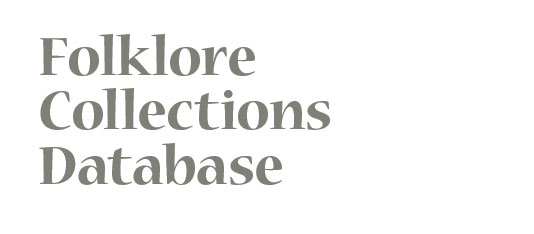

Contemporary legends collected by undergraduate students in USU (1960s to present) and BYU (1960 to 1985) folklore classes. Collected primarily in Utah, the items focus principally on folklore of the Western U.S.
The USU Student Folklore Genre Collection: Group 7: Contemporary Legends consists of approximately 1,500 individual items of legends collected by undergraduate students. Most items include informant, context, text (the folklore item), texture (stylistic notation), and collector data
Legends About Automobiles Legends About Animals Horror Stories Accident Legends Sex and Scandal Legends Crime Legends Business and Professional Legends Legends About Government Celebrity Rumors and Legends Academic Legends
Forms one of nine subgroups in the Utah State University student genre collection, housed in the Fife Folklore Archives. Guide to folklore collecting assignments
The Fife Folklore Archives Student Folklore Genre Collection consists of folklore items collected by undergraduate students in Utah State University folklore classes from the late 1960s to the present and folklore items collected by undergraduate students in Brigham Young University folklore and anthropology classes during 1960-1978. Most items include informant data, context, text (the folklore item), texture (stylistic notation), and collector data. The items of folklore are in text form on 8 ½ x 11 sheets of line-free paper. Since, 1999 genre items also include release forms. The materials do not circulate. The collection is separated into nine groups:
Group 1: customs (foodways) Group 2: belief Group 3: speech Group 4: tales and jokes Group 5: songs Group 6: games and pranks Group 7: legends: character (boxes 15-16), contemporary (boxes 20-27), etiological (boxes 17-19), human condition (boxes 13-14.2), supernatural non-religious (boxes 7-12), and supernatural religious (boxes 1-6) Group 8: material culture Group 9: e-lore: electronically transmitted folklore (Xerox, facsimile and e-mail)
In the late 1960s, folklore courses were first taught at USU by Professor Austin Fife. At this time, Fife (a French professor) had his students collect items of folklore on pre-printed index cards. The information on the cards has now been transferred to 8 ½ x 11 sheets of paper and the items have been added to the genre collection. At about the same time (1967) at Brigham Young University (BYU) in Provo, Utah, Professor William A. Wilson began teaching folklore classes. Wilson had his students collect folklore using both genre collections and major project (focused) collections. The genre items were separated and filed by genre. Also included in the BYU genre collection were items from two other BYU professors who had their students collect folklore: John Sorenson and Thomas Cheney. The student collections from Sorenson and Cheney were given to Wilson and he added them to the genre collection along with his students' work. On these items, in the upper right hand corner above all other information, Wilson noted "SC" for Sorenson Collection and "CC" for Cheney Collection
In 1978, William A. Wilson left Brigham Young University to direct the newly established Folklore Program and Folklore Archives at Utah State University. Wilson brought to USU the student genre collection that he had amassed at BYU, with a copy of the genre collection remaining at the BYU library. At the USU folklore archives (later named the Fife Folklore Archives for Austin and Alta Fife), William A. Wilson and Barbara [Garrett] [Walker] Lloyd used the already sorted BYU materials when creating the collection classification system. This classification system, with its roots in the Finnish archive tradition, is still used at the Fife Folklore Archives
Wilson was at USU until 1985 when he returned to BYU to head the English Department. However, the BYU administration gave him a year's leave of absence to copy all the student materials in the Fife Folklore Archives at USU and bring them with him to BYU. Wilson notes: "Hannele [wife] and I practically lived in the USU archive. Max [Peterson, Director of the Merrill Library] brought a copy machine into the archive, and we copied day after day. First we copied the entire BYU genre collection. Then we copied all the items in the accumulated genre piles [of USU items]." Thus, in 1985 the BYU and USU folklore genre and focused collections were identical. During the following years, William A. Wilson and later Kristi Bell at BYU's Folklore Archives (now named the William A. Wilson Folklore Archives) and Barbara [Garrett] [Walker] Lloyd and later Randy Williams at the Fife Folklore Archives at USU worked to maintain the same classification system at both universities' folklore archives. However, the materials submitted by students from the two universities began, of course, to differ from each other, as students generally collect the kinds of materials their professors talk about in class
In 1985 Professor Barre Toelken came to USU (from the University of Oregon) to direct the Folklore Program. He continued the folklore-collecting legacy that Austin Fife and William A. Wilson began. Over the years Professors Steve Siporin, Patricia Gardner, Jan Roush, Jeannie Thomas, Lisa Gabbert and Lynne McNeill and instructors Barbara [Garrett] [Walker] Lloyd, Randy Williams, and Michael Christensen (and others) have all had their students collect and deposit folklore items to the Fife Folklore Archives. And thus, the USU Student Genre Collection continues to grow. The format has changed somewhat over the years to reflect the trends in folkloristics. As stated above, many of the early submissions had little contextual data, and often limited, if any, informant data. William A. Wilson created a collecting format that included: informant data, contextual data, and text (item of folklore). Barre Toelken and Randy Williams added "texture" to the format of genre collections, allowing the collector to give "the feel" of the item to potential researchers. In in 1998, students were asked to include release forms with their genre items, following a trend in the folklore field that addresses not only the item (which in some cases, like a joke, may been seen as part of the public domain materials and therefore not needing a release) but also the performance of the lore (and therefore necessary for a release from the performer informant).In 2002, the collection was moved from hundreds of three-ringed binders to archival folders and boxes, making the collection more physically stable and easier to manage and use. In 2003, the collection finding aids were encoded in HTML as a means of hosting them on-line for greater research accessibility. In 2012, the finding aids were hosted in EAD
Arrangement: topical
Open to public research. To access the collection a patron must have the following information: collection number, series number, sub-series number, if applicable, box number and folder number (or image number)
It is the responsibility of the user to obtain permission to publish from the owner of the copyright (the institution, the creator of the record, the author or his/her transferees, heirs, legates, or literary executors). The user agrees to indemnify and hold harmless the Utah State University Libraries, its officers, employees, and agents from and against all claims made by any person asserting that he or she is an owner of copyright
Patrons must sign and comply with the USU Special Collections and Archives Use Agreement and Reproduction Order form as well as any restrictions placed by the collector or informant(s)
Permission to publish material from the USU student folklore genre collection legends must be obtained from the Curator of the Fife Folklore Archives and/or the Special Collections Department Head
The items in the Student Folklore Genre Collection were collected by USU and BYU students in folklore and anthropology classes as part of course requirements and deposited in the Fife Folklore Archives by the instructor. Duplicates of BYU student items are housed at BYU's William A. Wilson Folklore Archives. The materials in Group 7: Legends (including character, contemporary, etiological, human condition, supernatural non-religious, and supernatural religious legends) cover the period from approximately 1960 to the present. The collection was created in 1978 by William A. Wilson and Barbara [Garrett] [Walker] Lloyd
Originally processed by Barbara [Garrett] [Walker] Lloyd and William A. Wilson and updated over the years by Fife Folklore Archives staff. Most recently updated by Nicole Cornwall, 2012; Heidi Williams, 2014-2015; Rachel Iroz, 2015. Finding aid created by Randy Williams and Tricia Harrison, 2002; updated by Randy Williams, March 2011
| Title | Type |
|---|---|
| Subseries |